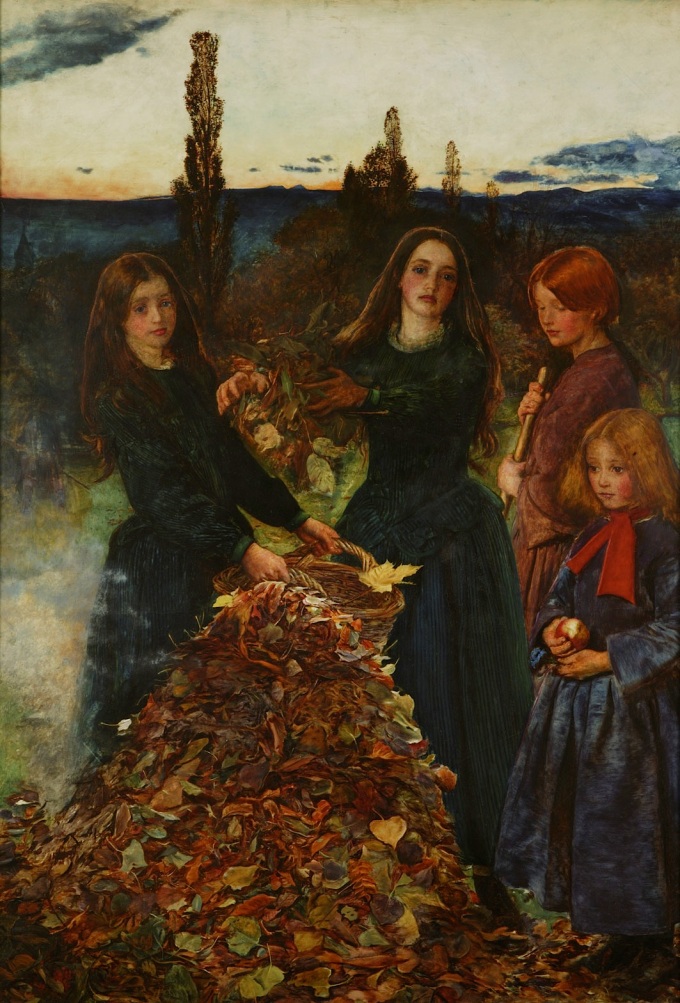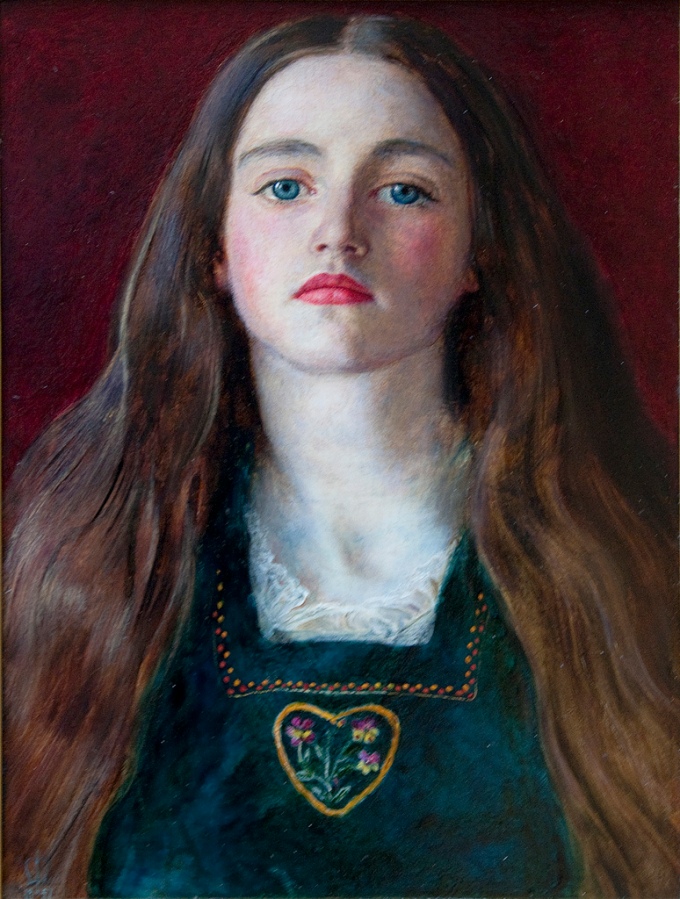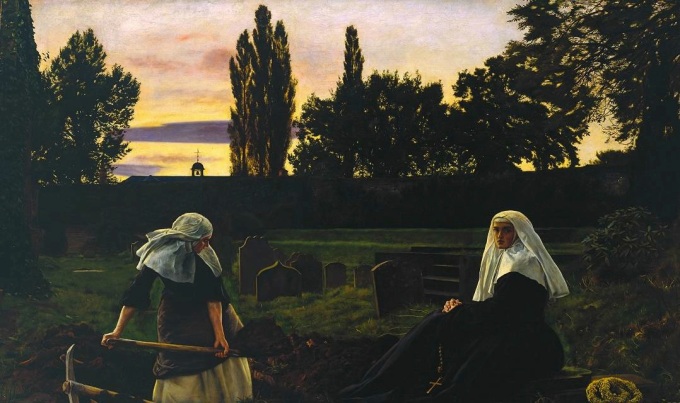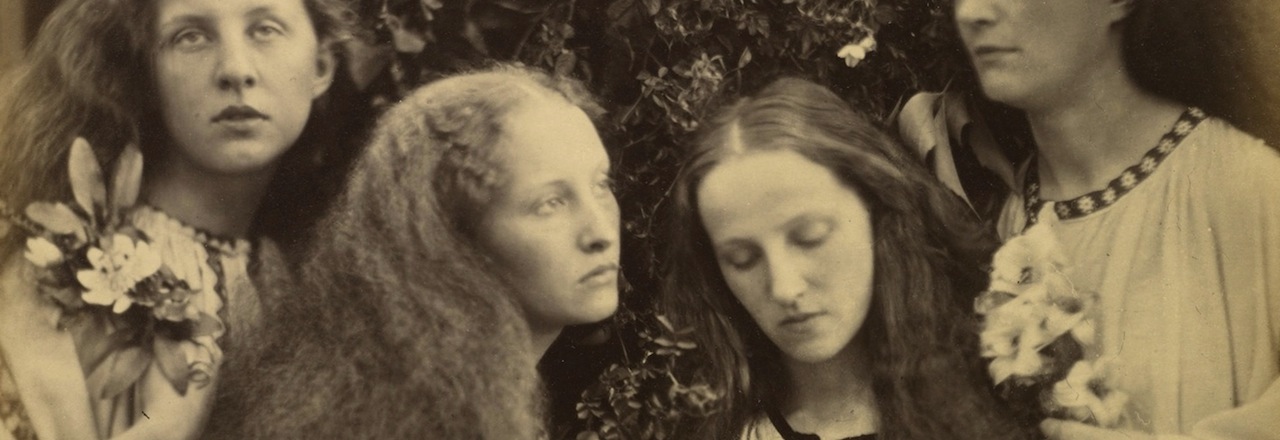Autumn, that deep and most liminal of seasons, is very much upon us. The view framed by my window confirms it: swirling grey-blue sky, cool billowing wind, green treetops singed with browns and yellows; all falls, tumbles, and the light takes on its last moments of vivid brilliance before winter sets in. At this time of year a particular painting is often in my mind, particularly when I walk with flurries of dead leaves skittering at my feet — John Everett Millais captured that mood so evocatively in one of his finest paintings, Autumn Leaves, which he began in autumn 1855.

Millais’s motive was, apparently, to create ‘a picture full of beauty and without subject’. This signalled a shift from the very specific literary, biblical and historical subjects of his earlier paintings — Tennyson’s ‘Mariana’, Keats’s ‘Isabella and the Pot of Basil’, Shakespeare’s Hamlet and Christ in the house of His Parents — to an emphasis on mood and more universal ideas. It has been said of Autumn Leaves, then, that it anticipates the artistic programme of the Aesthetic Movement, which often favours mood over morals. The universal idea which Millais expresses in this painting is of transience and mortality, with the season of autumn itself as an atmospheric symbol. Autumn’s archetypal emblems — the dead leaves, the smoke wreaths from the leaf pile, the apple held by the little girl on the right, the sunset — are all present, combining to create a richly textural image. (The dense pattern of leaves seems to spill out from the picture plane.) Furthermore, it is clear that the bright, crisp, ‘hard-edge’ style and minute brushwork of Christ in the House of His Parents has been deepened and loosened, with a darker palette and sometimes even sketchy brushwork around the edges of the picture.

Millais’s portrayal of autumn as a melancholy, transient season is more in line with English poetry than with artistic traditions. Arcimboldo’s eccentric picture from 1573 (above) is a good example of this previous approach in art, which tended to view autumn as a time of fecundity full of ripe fruits and luscious vegetation ready for harvest. Although Keats, writing in September 1819, famously called it the ‘season of […] mellow fruitfulness’ and describes in indulgent detail ‘all fruit with ripeness to the core’, English poetry more frequently aligns autumn with nostalgia and mortality. If the yearly cycle of seasons is taken as a metaphor for the human life, with spring as new life and winter as death, then autumn represents a period of transition between youth and old age. Indeed, the narrator of Shakespeare’s ‘Sonnet 73’ takes autumn as ‘that time of year thou may’st in me behold’, likening it to his advanced years — following this with solemn imagery of ‘yellow leaves’, ‘bare ruined choirs where late the sweet birds sang’ and ‘the twilight of such day’. Millais had more contemporary poetry in mind, since he was reading Tennyson’s The Princess (1847) at the time and would have seen the famous lyric poem within it, which begins:
Tears, idle tears, I know not what they mean,
Tears from the depth of some divine despair
Rise in the heart, and gather to the eyes,
In looking on the happy Autumn-fields,
And thinking of the days that are no more.
A further connection to Tennyson is that Millais was apparently greatly inspired to paint an autumnal subject after helping to sweep up and burn dead leaves during a visit to the poet’s home at Freshwater on the Isle of Wight in November 1854.
In contrast to Arcimboldo’s image of Nature’s bounties the only piece of fruit in Autumn Leaves, the red apple, appears to be rotting, while the leaves themselves, once fresh and green in spring, are now being gently smoked away. Malcolm Warner, in the 1984 Tate catalogue, informs us that ‘the girls in the foreground, for all their youth and beauty, must inevitably go through the same processes.’ An especially foreboding detail of the painting is the presence of a murky figure holding a scythe in the left midground, veiled through the smoke; a similar portent appears with a more sinister clarity at the far right of Millais’s painting Spring (Apple Blossoms) four years later (below). This could easily be interpreted by the viewer as a symbol of death. The setting of Autumn Leaves in dusky twilight, that most liminal time between day and night, further enhances this theme. On a more practical level it also allows Millais to exercise his skills as a painter, brilliantly expressing the almost hallucinatory tones and harmonies of the sunset — blues, yellows, browns, blacks. One contemporary reviewer noted the painting’s ‘depth of feeling’, ‘grandeur’ and conveyance of ‘the spellbinding power of nature.’

The garden of Annat Lodge in rural Perthshire provided the backdrop for Autumn Leaves. Millais and his wife Effie (née Gray, formerly Ruskin) had settled there after their marriage in 1855. The spire of St John’s Kirk of Perth can be glimpsed in the background to the left of the painting, just below the horizon, perhaps also acting as a subtle religious reminder. The girls are, from left to right: Alice Gray and Sophie Gray (Effie’s younger sisters), Matilda Proudfoot, a girl from the local School of Industry, and Isabella Nicol, a maid’s daughter. According to Effie they were all ‘under 13 years of age and grouped beautiful[ly].’ There is something of a contrast between the clothing of the Gray sisters — matching dark-green velvet winter dresses, indicating a higher class — and the working-class outfits of the other two girls; Effie wrote that the brown dress worn by Matilda, holding her rake, was ‘the common dress of the School of Industry at that season’. Sophie Gray, who is in the act of dropping a handful of leaves onto the bonfire, is especially striking, with her loose hair and direct gaze. The upward positioning of her head recurs in Millais’s beautiful head-and-shoulders portrait painted in 1857 (below), which Jason Rosenfeld describes as ‘appeal[ing] to direct emotion and desire’.

Millais returned to the dusky setting and mortality theme in his strange, haunting painting of two nuns in a churchyard, The Vale of Rest (below), which is also considered as a pendant piece to Spring (Apple Blossoms). For a simple conclusion, I need only return to Millais’s own words on the autumnal subject. William Holman Hunt, in his 1905 memoir Pre-Raphaelitism and the Pre-Raphaelite Brotherhood, recalls Millais saying:
Is there any sensation more delicious than that awakened by the odour of burning leaves? To me nothing brings back sweeter memories of the days that are gone; it is the incense offered by departing summer to the sky, and it brings one a happy conviction that Time puts a peaceful seal on all that has gone.

*
Further information
- The Pre-Raphaelites, 1984 Tate catalogue, pp. 139-141
- Malcolm Warner, ‘John Everett Millais’s Autumn Leaves: “a picture full of beauty and without subject”‘, in Pre-Raphaelite Papers, ed. by Leslie Parris (London: Tate, 1984), pp. 126-142
- Jason Rosenfeld, John Everett Millais (London: Phaidon, 2012), pp. 92-97

